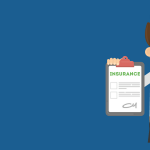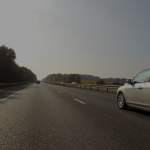SR-22 Insurance in California
There’s plenty of mystery and confusion that surrounds SR-22. Once convicted, drivers always question themselves – “What is an SR-22?”, “How can I get the cheapest SR-22?”, “Which companies offer the cheapest and the quickest SR-22 services?” and so on…
Well, an SR-22 is nothing but a certificate of insurance which also signifies your duty towards financial responsibility. It is often required for a driver to reinstate or maintain their driving privileges after certain traffic-related offenses. Rules for filing SR-22 differs from state to state. In this article, we will be specifically talking about SR-22 insurance in California. If you have been convicted for an act of DUI or DWI and your license has been revoked, you will need to file an SR-22. So how does the process start? Read on to find out.
Once your California driver’s license has been confiscated… either due to loss of DMV DUI hearing, or because you have not asked for one, or because you have been convicted of improper driving in the court of law… an SR-22 is required to restore your driving privileges. First, your auto insurance company files an SR-22 with the California Motor Vehicle Department to confirm that you meet the minimum requirements for state auto insurance coverage. Further, it is also a mandate to proceed driving with an immobilizer (IID) installed. This serves as a proof of acceptance from your end and you are liable for any DMV action that requires you to provide proof of financial responsibility.
Few examples of circumstances where the California DMV may prompt you to file an SR-22 include (but are not limited to):
- When you get convicted for a DUI/DWI
- When there is excessive violations within a short period of time
- When you drive a vehicle without insurance
- When there are unpaid legal judgments
- When you are involved in an accident without insurance
- When you fail to provide a valid proof of insurance
If the California DMV orders you to hold an SR-22, your policy must cover any/all cars that are registered or those that you frequently drive.
If post your DUI conviction, you no longer intend to drive, you need not file an SR-22. But if you wish to drive but do not own a car or have regular frequent access to a family car then you are required to apply for a non-owner’s SR-22 liability policy. This policy gets you covered and provides you the permission to drive another person’s car anytime.
The Process of Filing an SR-22
Only a licensed automobile insurance company would complete the SR-22 insurance form if the policy is valid and is within the boundaries of the state’s liability. When the DMV receives a California SR-22 document, a representative will review it to ensure that it lists the vehicle, the registered owner, expiration dates, and the liability limits defined in the policy. If these terms are incorrect, Form SR-22 is considered invalid and does not meet the requirements of the DMV. The suspension cannot be reversed until the SR-22 insurance is corrected. Fetching low-cost SR-22 insurance may be the top priority for drivers, but the form can only be completed when strict guidelines are followed. Hence it is crucial for drivers to find a California SR-22 insurance that justifies all these standards so that the adjournment can be lifted.
When a driver receives an order to submit an SR-22 form to the DMV, he will have to consult an automobile insurance company and incorporate a policy in accordance with the California guidelines of SR-22 insurance. After purchasing, the auto insurance company’s representative will complete Form SR-22 and hand it over to the driver. It is now the driver’s responsibility to bring the SR-22 insurance form to the DMV for a quick submission. Depending on the DMV requirements for the specific driver case, it may be necessary to complete Form CA SR-22 for each policy renewal for several years before the obligation is satisfied.
Share this post:
Comments are closed.







